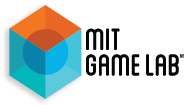Game Design & Development
The MIT Game Lab is a research and development laboratory that makes games for research. In addition to our own ongoing projects, we often work with partners, both at MIT and external stakeholders, who are interested in exploring how games might be used in their own specific application or research domains.
Games for research
The MIT Game Lab serves as an interpreter between academia and industry by creating playable, real-world demonstrations of state-of-the-art concepts and research. The lab provides a place for students, academics and industry professionals to work together, to develop feasible and engaging games, and to expand the boundaries of what is possible.
Collaborative process and design
Projects begin with pre-production typically involving numerous paper prototypes and concepts to focus the research and to create a base of knowledge to pass on to a larger development team. We always start the game design process with an initial research question or use in mind. Many of our partners are external to MIT and are either bringing a specific question they want to investigate or looking to collaborate with an MIT Game Lab researcher. We require research partners to be involved in our game design process from start to finish. This ensures that our games will be useful for their needs after completion.
Focus on the player & communities
Our development process is iterative and player & community-centric. We involve users from target audiences throughout development to ensure that players will be able to engage with the game and lend their insight to the research process. Focus testing, user research, interviews, and co-design are essential methods for incorporating the player into the design process of our games.
Importance of polish
There are two approaches to prototyping: broad and deep. Broad prototyping occurs in the earliest phases of our design process, when a large number of rough experiments provide us with a comprehensive survey of what avenues are feasible for the project at hand. Deep prototyping goals, by contrast, are to discover all of the emergent possibilities, tradeoffs, and player responses through a brief but polished vertical slice of gameplay. Depending on the needs and scope of various projects, different forms of development are undertaken.
